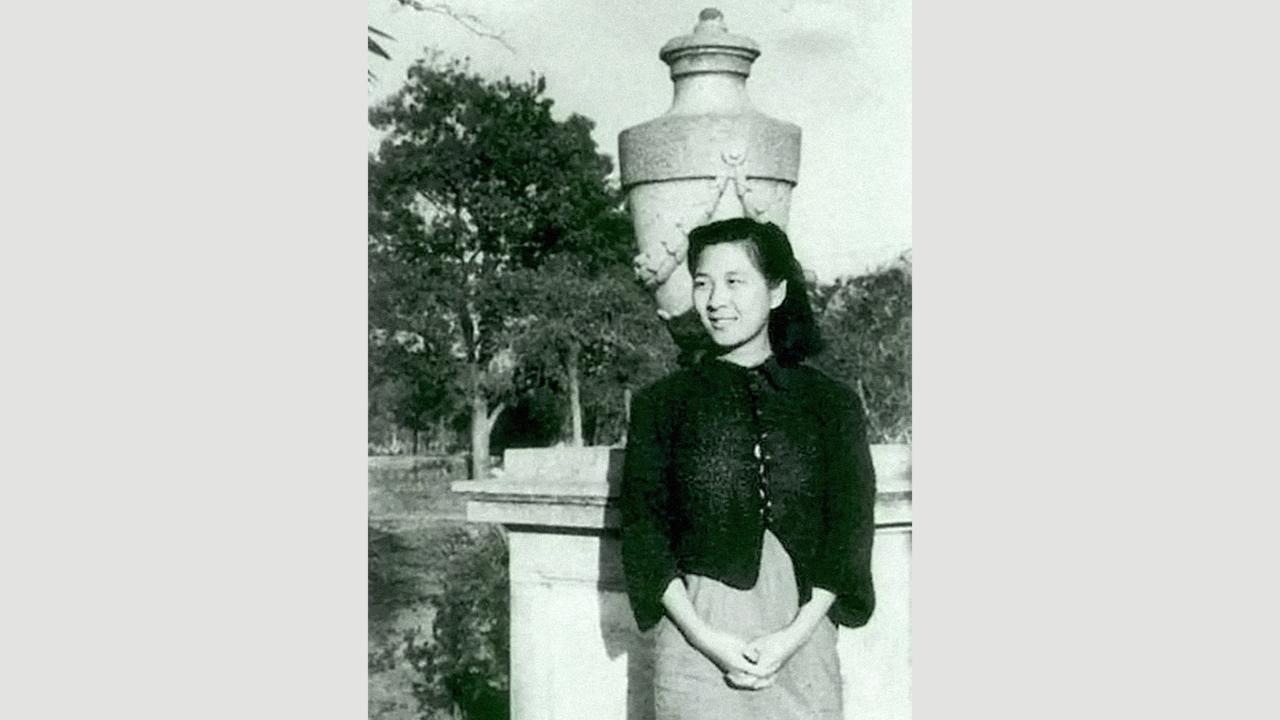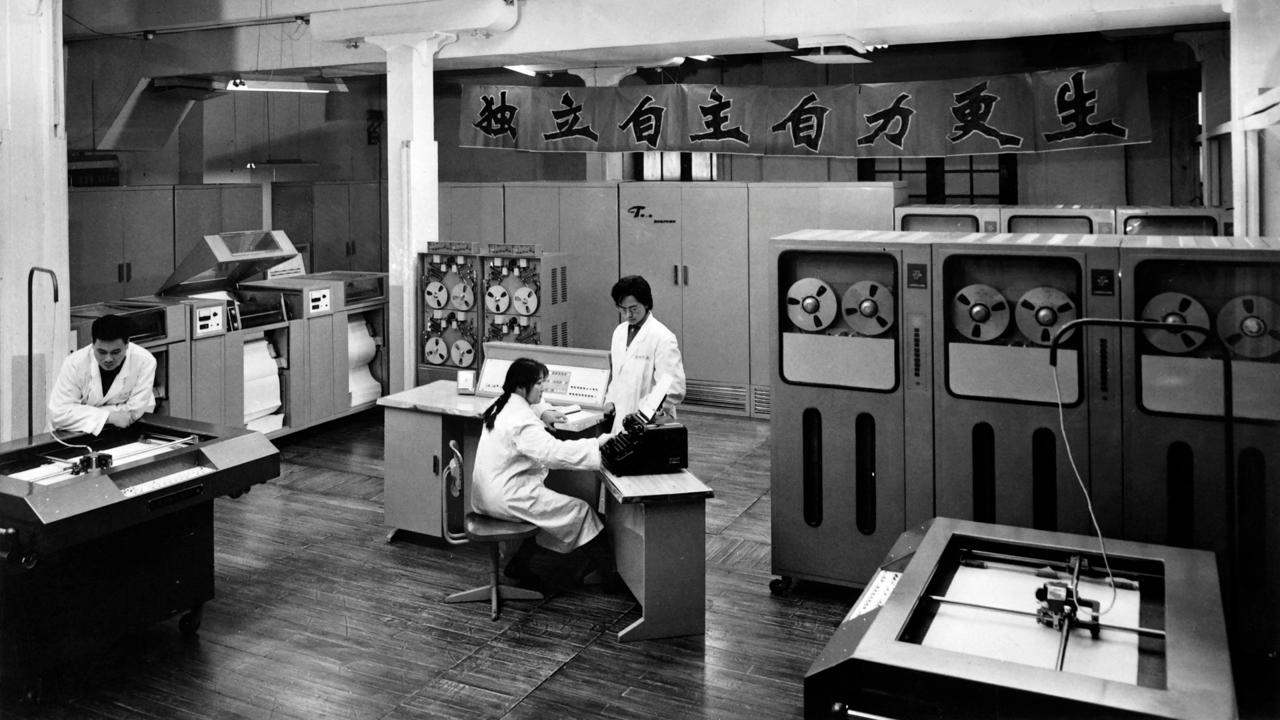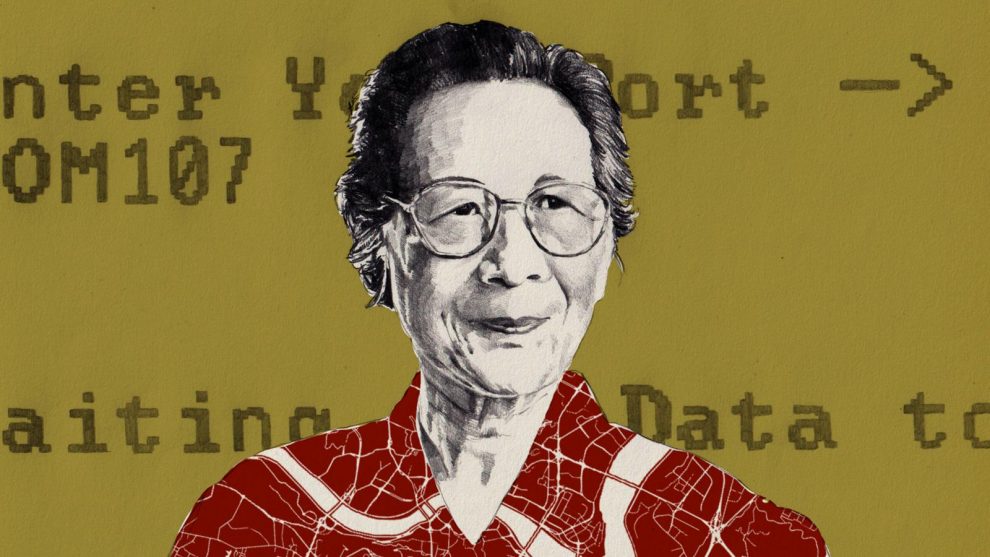In April 1960, China’s first home-grown electronic digital general purpose computer – the Model 107 – went live. Xia Peisu, the machine’s engineer and designer, had just made history.
After decades of war with Japan and the Chinese Civil War in the first half of the 20th Century, the country’s technological innovation had fallen behind much of the developed world. Later, caught in the politics of the Cold War, the newly established People’s Republic of China was cut off from aid and exports from capitalist nations in the West. Chinese scientists relied heavily on hardware and expertise from the Soviet Union to build up their computing power.
But when that relationship dissolved in 1959, China was once again isolated and it had to look inward for a way forward in an increasingly computerised world. Within a year of the Soviet Union withdrawing aid, Xia delivered the 107 – China’s first step on the road to independence in computing.
Today, China is a global leader in computer production. In 2011, China surpassed the US to become the world’s leading market for PCs, and the desktop PC segment of their computer industry alone is projected to bring in a revenue of over $6.4bn (£4.9bn) this year.
But there was more work to be done than making computers. To build a new computer industry – and a new field of computer science to support that industry – China needed trained personnel. Here, too, Xia was essential.
She helped shape some of China’s first computing and computer science institutions and developed their training materials. She taught the first computer theory class in the country. Over her career, she would usher hundreds of students into the country’s burgeoning field of computer science.
In the aftermath of war and political upheaval, Xia shaped a new field of science and a new industry in China. Through both her technological innovations and the many students she taught, Xia‘s influence resonates throughout China’s computing world today.
Born into a family of educators in the south-eastern municipality of Chongqing on 28 July 1923, Xia rarely went without an education. First attending primary school aged four and receiving private home tutelage at eight, she went on to excel at Nanyu Secondary School and graduated top of her high school class at National No. Nine in 1940.
China was in the throes of the Second Sino-Japanese War, an eight-year conflict that ravaged China and claimed the lives of millions of Chinese civilians. At the war’s onset in 1937, the Japanese captured Nanjing, the capital city of the Republic of China. Xia’s home of Chongqing became a haven for Nanjing refugees. It also became home to National Central University – an institution which, despite forced relocation from Nanjing, kept teaching students. In 1941, Xia joined as a student in electrical engineering.

Xia graduated with a bachelor’s degree in electrical engineering in 1945. The same year she met Nanjing war refugee and fellow National Central alumnus Yang Liming, now a professor of physics at the university. They started and maintained a relationship even after Xia left for Shanghai for graduate studies at the Telecommunications Institute of Jiaotong University and Yang left to study under Nobel laureate Max Born at the University of Edinburgh.
Two years later, Xia reunited with Yang when she began to study for her doctorate in electrical engineering at the University of Edinburgh. In her dissertation, “On Parametric Oscillations in Electric Circuits and A Graphical Analysis for Non-Linear Systems”, she developed methodologies that could more accurately predict variations in frequency and amplitude within electronic systems, which led to wide-reaching applications for any system with an electrical frequency, from radios to TV to computers.
In 1950, she was awarded her PhD. Later that same year, she and Yang married in Edinburgh. Both scientifically-minded and deeply invested in putting those minds to work in their home country, the couple returned to China in 1951. They both took up positions at Tsinghua University (or Qinghua University), where Xia worked on telecommunications research.

The China that she and Yang returned to, however, was a changed one.
In 1949, the Chinese Communist Party (CCP) had prevailed over the Kuomintang party (Chinese Nationalist Party) in the Chinese Civil War, driving the Republic of China to Taiwan and replacing it with People’s Republic of China led by Mao Zedong. In the wake of the Second Sino-Japanese War and the transfer of political parties, China’s economy, industry, and infrastructure was languishing and lagging behind many Western nations.
The Second Sino-Japanese War had hit the country particularly hard. “In essence, all institutions of higher learning, all centres of finance, the main centre of industrial production and the government of China has fled, first to the city of Wuhan, and then after Wuhan [was] lost, to the city of Chongqing in [the] more remote and much poorer area of Sichuan,” says Tom Mullaney, historian at Stanford University and author of the forthcoming book The Chinese Computer. “[The government of China is] basically living a kind of survival existence, but it’s definitely not in any kind of position to invest in electrical engineering, weapon design, and so forth.”
When the CCP came to power, they attempted to rebuild the lost infrastructure, but it wasn’t easy. The US had supported the defeated Kuomintang party in the Chinese Civil War, and they, along with other capitalist nations in the West, denied the newly formed communist country assistance and exports. Mao and the CCP turned to their Soviet neighbours to the north. Seeing an opportunity to bring China into the communist block in the East, the Soviet Union entered into a partnership with China, agreeing to assist China in bolstering its economy, science and technology, including computing.

Xia became intricately tied to Sino-Soviet partnership when, in 1953, mathematician Hua Luogeng visited her place of work at Tsinghua University and recruited her into his computer research group at the Chinese Academy of Sciences (CAS). She was now one of the three founding members of China’s first computer research group. The CAS would become ground zero for computing technology and research and Xia would be at its centre.
Even though Luogeng’s and Xia’s research group had been developing plans of their own to design electronic computers for three years, the CCP didn’t adopt an official in this area of technology until 1956, with the formalisation of the Sino-Soviet agreement “Long-term Protocol for Developing National Sciences and Technology between 1956 and 1967” – also known as the 12-year plan. Together with Soviet experts, the CCP and the CAS identified computing technology as one of four fields in science and technology key to building up China’s national defense.
An electronic computer would have wide-reaching applications in support of China’s infrastructure and national defense, including development and testing of nuclear weapons, management of large-scale complex transportation systems and development of a satellite program or space program, says Mullaney. “All of these things, and more, were domains in which other powers – the Soviet Union, the US, Great Britain and later France – were developing electronic computing in support of. And China knew that it needed to be able to enter that space if it was going to become competitive on the global stage, economically and militarily.”
China had a long way to go before they could produce a computer. For one, rather than having a single field of computer science, the industry’s fundamental parts were spread out over mathematics, engineering and physics. These would need to be consolidated and then taught to a workforce before a computer could be built.
With her knowledge of electronics and mathematics, Xia was an ideal choice for this part of the plan.
With her knowledge of electronics and mathematics, Xia was an ideal choice
In 1956, she joined a delegation to Moscow and Leningrad to explore Soviet research, production and education in computing. When she returned that same year, she undertook translation of Soviet computer design from Russian into Chinese, including a 1,000-page manual that became the course text for teaching Chinese students Soviet computing.
That same year, under the auspices of the CAS’s Institute of Mathematics and Institute of Physics, Xia taught the country’s first computer theory class. She also helped the CAS in its first major step in establishing a computer science department with the Institute of Computer Technology (ICT). The ICT was quickly followed by the CAS’s founding of the University of Science and Technology. Xia was involved in developing the computer science courses at both institutions, and as a course developer and lecturer, she oversaw the training of hundreds of students between 1956 and 1962.
“What [China] needed above all was a training program,” Mullaney notes. Xia gave them one.
By 1959, China had succeeded in replicating two Soviet electronic computer designs; the 103 model and the 104 model, each based on the Soviet M-3 and BESM-II computers respectively. But just as China began making progress in producing computers, the Sino-Soviet relationship was in dissolution. The two countries’ leaders sparred over whose nation was the centre of the communist world and whose path to global communism was the right one.
The relationship had become so bad by 1960 that the Soviet Union withdrew all support, both material and advisorial, from China, says Mullaney. After the Soviets withdrew, many other countries assumed that China’s computing industry just stopped.
It didn’t.

CAS researchers continued to pursue computing technology and computer science on their own. Xia’s 107 model was the first computer that China developed after Soviet withdrawal, and unlike the 103 and 104 models based on Soviet design, the 107 was the first indigenously designed and developed computer in China. The 107 was soon reproduced and installed in training institutions around China.
Throughout the 1960s, China continued to develop more powerful and sophisticated computers at the CAS in isolation, progressing from tube circuits like that of the 107 to transistors and, in the 70s and early 80s, to integrated circuits. When a delegation of US computer scientists visited China in 1972, they didn’t expect to find China’s computer industry humming along. “All of the members of that delegation, in the few testimonials we have, all express surprise at how far [China had come],” Mullaney says.
Throughout this time, Xia continued a balance of research and development in high processing speed computers and training new computer scientists and engineers. In 1978, Xia helped found the Chinese Journal of Computers as well as the Journal of Computer Science and Technology, the first English-language journal for computing in the country. And in 1981, she developed a high-speed processor array called the 150AP. Compared to the earlier Soviet-based model 104 that performed 10,000 operations per second, her 150AP boosted a computer’s operations to 20 million per second.
Due in large part to Xia, computer science coalesced into an independent field of study in China and the country’s computer industry emerged despite a tumultuous beginning. “In terms of someone who held her position and was such a central actor in a leadership role, I have not come across other women of her stature at that time,” Mullaney says.

Although her design of the 107 made history, it was Xia’s founding of institutions and cultivation of cohort after cohort of students that ultimately made China’s future. “Those are students who… would lay groundwork for what we see today,” says Mullaney.
One of those students later became the chief architect of Loongson CPUs, and in 2002, he personally honored his mentor by naming the processing chip of China’s first CPU computer “Xia 50”.
Dubbed in China the “Mother of Chinese Computing”, Xia is still recognised as a founding member of the country’s computer industry. The China Computer Federation awards the Xia-Peisu Award annually to women scientist and engineers “who have made outstanding contributions and achievements in the computing science, engineering, education and industry”. Chen Zuoning and Huan Lingyi received the award most recently in 2019: Chen for her work in developing domestic high-performance computing systems and Huan for her research in CPUs and other core computer devices. Continuing along the path Xia charted for them, Chen and Huan have strengthened China’s domestic computer technology.
—
Missed Genius
Ask people to imagine a scientist, and many of us will picture the same thing – a heterosexual white male. Historically, a number of challenges have made it much more difficult for those who don’t fit that stereotype to enter fields like science, math or engineering.
There are, however, many individuals from diverse backgrounds who have shaped our understanding of life and the Universe, but whose stories have gone untold – until now. With our new BBC Future column, we are celebrating the “missed geniuses” who made the world what it is today.















Add Comment